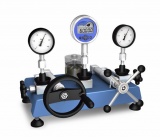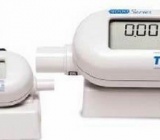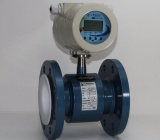Industrial platinum resistance thermometer calibration
.png)
Main content
- What is an industrial platinum resistance thermometer?
- Structure and operating principle
- Application
- Why should you calibrate an industrial platinum resistance thermometer?
- The industrial platinum resistance thermometer calibration procedure
Platinum resistance thermometers are widely used and play an important role in industries because of their advantages such as high accuracy, stability and suitability for many types of temperatures.
A resistance thermometer, also known as a resistance temperature detector (RTD), operates on the principle that the electrical resistance of a material changes with temperature. This property is particularly noticeable in metals, and the device often uses pure platinum due to its stability and nearly linear relationship between resistance and temperature. Other materials like certain metal oxides and zinc oxide can also be used.
1.2 What is a platinum resistance thermometer?
A platinum resistance thermometer is a type of resistance thermocouple that uses platinum as the sensing element. Platinum has high purity, stability, very little oxidation, and thermal insulation properties, meaning it does not change its temperature when in contact with air or other substances. This makes platinum very suitable for measuring temperature accurately and reliably.
1.3 The similarities and differences between resistance thermometers and platinum resistance thermometers
- The similarities: they both use the principle of measuring the temperature by the change in the electrical resistance of a metal element. They both have advantages such as high accuracy, stability, sensitivity, and wide temperature range.
- The differences:
- The material of the sensing element: A resistance thermometer can use other metals besides platinum, such as copper, nickel, or gold, while a platinum resistance thermometer uses only platinum
- resistance thermometers can have different shapes such as coiled wire or curved wire, but not all shapes are suitable for all applications. Platinum resistance thermometers only have a wire shape because they use platinum as the sensing element.
- Temperature measurement range: A resistance thermometer can measure temperatures from -200°C to 1000°C, while a platinum resistance thermometer can measure temperatures from -260°C to 1200°C.
- Price: Resistance thermometers are cheaper than platinum resistance thermometers because they use less rare and lower quality materials
2. Structure and operating principle
2.1 Structure
 |
The structure of a platinum resistance thermometer consists of a thin wire or strip of platinum wrapped around a ceramic or glass core. The core provides insulation and strength to the wire, while the wire acts as the sensing element. The wire is connected to two terminals, which are usually made of copper, and are enclosed in a protective tube or sheath. The tube or sheath also protects the wire from corrosion and chemical reactions.
2.2 Operating principle
The working principle of a platinum resistance thermometer is based on Ohm's law, which states that the voltage across a resistor is proportional to the current through it and inversely proportional to its resistance. By measuring the voltage across the platinum wire, which depends on the temperature, helps us calculate the temperature using a calibration equation. The calibration equation relates the voltage to the temperature for a given platinum wire with known characteristics.
5. The industrial platinum resistance thermometer calibration procedure
- UUT is not cracked, broken, or dented in the protective cover.
- Check stability
- If the values aren’t met, the UUT must be recycled. Stop calibrating after 3 times of failure, and then inform the customer.
- Determine the temperature-resistance relationship of the UUT
- Determine the delay response of the UUT
- Combined measurement uncertainty
- Expanded measurement uncertainty
- Recommended calibration cycle: 01 year
To consult and request a quote on our industrial platinum resistance thermometer calibration services, please kindly contact us via the following information:
LABORATORY: DONG TAM MEASUREMENT AND TECHNICAL TRADING SERVICE CO., LTD
Address: No.57-59 Street 11, Binh Hung Residential Area, Binh Hung Commune, Binh Chanh District, Ho Chi Minh City
TEL: 028 375 83 869 - Hotline: 0909 347 891 (Mr. Lâm)
Email: info@dongtam-mes.vn
Relative post | Xem tất cả
- Stopwatches calibration
- ORP meter calibration
- Hydrometer calibration
- Analytical and Technical balance calibration
- Analytical and Technical balance verification
- Spring dial scales verification
- Spring dial scales calibration
- Bench weight scale verification
- Bench weight scales calibration
- Platform scales verification
- Platform scales calibration
- Chlorine meter calibration























 Legal
Legal  Call: 0283.7583869
Call: 0283.7583869  Search for Certificate
Search for Certificate  Contact
Contact